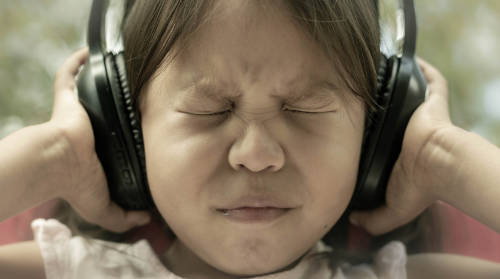
Sensory overload is when your five senses—light, sound, taste, touch, and smell—take in more information that your brain can process.
Overwhelmed by all the input, the brain responds as it would to a life-threatening situation and enters fight, flight, or freeze mode.
The fight, flight, or freeze response
The fight, flight or freeze response, or stress response, is your body’s natural reaction to danger.
Consider how an animal behaves in the wild when under attack by a predator.
With limited options, it can fight for its life, run away (flight) or freeze in the hope it’s not seen.
If you’re sent into fight-or-flight mode, your body will prepare for action. Your heart rate and breathing will increase, delivering more oxygen to the large muscle groups you need to fight or run.
Your hands and feet may get cold as blood is diverted. Your skin may get sweaty or pale.
This unconscious decision occurs almost immediately. Just like you’d leap out of the way of an out-of-control vehicle before you’ve completely processed what is happening.
Conversely, it means you also need to work hard to control this response.
Obviously, if sensory overload is making you feel the same as you would if you were attacked by a predator, you won’t be feeling good—unsafe, fearful, panicky, sweaty, pale, and shaky. These feelings and symptoms can take up to half an hour to subside. This process can be sped up for some by calming or down-regulating practices (deep breathing, meditation, hand-on-heart exercises, and similar).

Symptoms
In addition to the above signs of a fight-or-flight response, someone experiencing sensory overload might experience:
- anxiety, or feelings of overexcitement
- irritability, stress, fear, or panic
- physical discomfort
- restlessness and an inability to relax
- a strong urge to block some of the input by removing yourself from the situation or covering your eyes or ears.
In children, sensory overload can present as meltdowns or tantrums and be mistaken for misbehaviour.
Causes
There are many different things, or combinations of things, that can trigger sensory overload. They include:
- crowds, or tightly packed spaces
- loud sounds, such a loud music, fireworks, a crowd, a festival
- strong smells
- unpleasant touch—for example, things that are itchy or scratchy, rough, too hot, or cold on the skin
- sudden or unwanted physical contact
- drastic or sudden changes in light, temperature, or sound
- emotionally charged situations or groups of people.

Susceptibility
Certain other conditions can make someone more prone to experiencing sensory overload.
- sensory processing disorder
- generalised anxiety disorder
- attention deficit and hyperactivity disorder (ADHD)—people with ADHD can find it difficult to focus and can struggle with processing sensory input
- autism—people on the spectrum of autism disorders tend to be more susceptible to experiencing sensory overload
- post-traumatic stress disorder (PTSD).
Sensory processing disorder
Sensory processing disorder is a neurological condition in children that can affect the way the brain processes information coming in from the senses. They may be extra sensitive to sensory input (hypersensitivity), or conversely, not react to it (hyposensitivity).
Children with sensory disorders may avoid overstimulation (bright lights, strong smells, loud places) or seek out more stimulation when they are not receiving enough.
This over- or under-responsiveness can be mistaken for behavioural issues. Children who are hypersensitive may show an intense dislike for certain textures, or normal sights, sounds and smells. They may engage in risky behaviours to avoid the overstimulation. If they are craving stimulation, hyposensitive children may be impulsive, fidget, or seek attention by making disturbing or loud sounds.
Sensory processing disorder is not officially recognised in the Diagnostic and Statistical Manual of Mental Disorders (5th edition), due to a lack of research-based evidence to support its own diagnosis. Many experts see it as a part of other conditions such as autism spectrum disorder.
Children with sensory issues may benefit from the use of a sensory toolkit containing a variety of sensory tools, such as squeezy balls, fidget spinners, dough, different textured materials and objects, chewable objects, puzzle balls and many others, that can be used to either stimulate or calm their sensory system, as required.

Anxiety
Anxiety and sensory overload are both mental health conditions and share a deep relationship. People who are anxious may already feel overwhelmed and can be more prone to experiencing sensory overload. Similarly, people who experience sensory overload can experience anxiety from it.
Coping with sensory overload
It’s important to try and identify what sensory inputs and what situations or places trigger sensory overload for you. It may help to make and keep a list.
The first step is to try avoiding these triggers. This may not always be possible, for example at your work.
If you can’t avoid them, there may be ways to reduce them. It helps to plan ahead and think outside the box. You could ask the venue ahead of time to turn down the music or lights. If it occurs at your workplace, you could find a quiet room, close a door, wear headphones, or explain the situation to your colleagues and ask for their help in minimising loud or sudden noise.
Make sure your loved ones and friends are aware of your triggers. They can be a big help in avoiding triggering situations or notice when you are being overwhelmed. If you experience sensory overload, you probably wouldn’t want a large surprise birthday party at a busy venue, or example.
If you must go to a big gathering or event, you could move to a quiet corner, corridor, cafe, or another room to have conversations. Think about when and how to leave an event before you attend, so you have a plan if you start to feel overwhelmed. You can arrange a signal for a family member, friend, or colleague to let them know that you need to step out or leave.
Besides knowing your triggers, other things that help can include:
- identifying safe spaces
- developing a routine
- having a sensory tool kit.
Part of identifying your triggers is, conversely, identifying safe spaces at home and at work, where you don't feel triggered, or where you can go if you're feeling anxious to feel calm and safe. Routines can be a big help. Once you know what places or situations are triggers, routines can help you avoid them. Routines also help you by minimising stress and providing feelings of meaningful activity and comfort.

When you go shopping or doing errands, using a list can help you focus and keep you on track, minimising random inputs and helping you to not feel overwhelmed.
Sensory toolkits for adults can be things such as sunglasses for bright light, noise cancelling headphones for noisy places, fidget spinners, or anything that helps distract or calm you.
Make sure you get enough sleep and exercise, eat healthily, and drink enough water to help your brain work at its best.
It can be very helpful to learn mindfulness, meditation, yoga, or other techniques to improve your ability to focus, calm yourself, and down-regulate your autonomic nervous system (ANS), such as ‘hand-on-heart’ practice, and other self-care practices.
Getting help
If you are experiencing sensory overload, anxiety, or panic attacks, it’s important to discuss this with your general practitioner or a mental health professional. They can guide you on your options, which may include counselling, life-style changes, self-care techniques, medication (anti-anxiety medication or anti-depressants), or a combination.
If your child is experiencing issues with processing sensory input, talk to your general practitioner who can refer you to a specialist.